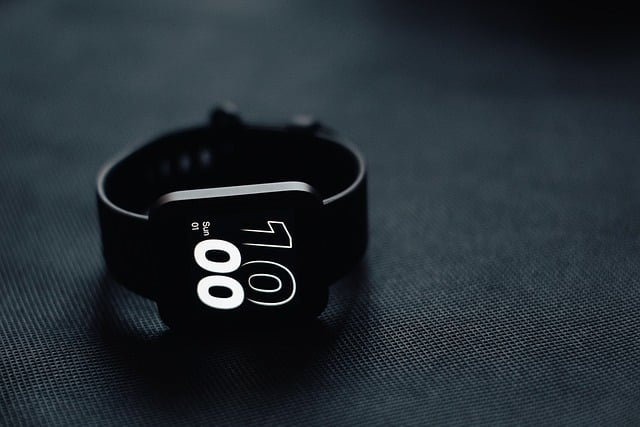
Introduction
Wearable technology has become an integral part of modern life, providing users with convenient tools to monitor their health, fitness, and daily routines. Among the most popular wearable tech are smartwatches and fitness trackers, which offer a wide range of features, from tracking physical activity to monitoring heart rate, sleep patterns, and even sending notifications from smartphones. These devices have evolved significantly over the past decade, moving beyond simple step counters to highly sophisticated gadgets that can provide real-time insights into the wearer’s well-being.
This article explores the evolution of wearable tech, focusing on smartwatches and fitness trackers, their key features, the benefits they offer, and how they are transforming the way people live and take care of their health.
The Evolution of Wearable Technology
Wearable technology has roots in the early days of computing when companies first began exploring ways to make technology more personal and portable. In the 1970s, calculator watches were among the first forms of wearable tech, allowing users to perform simple calculations on their wrist. However, the real revolution began in the early 21st century, when fitness trackers and smartwatches became commercially viable and widely adopted by consumers.
Fitness trackers like the Fitbit, introduced in 2009, pioneered the idea of tracking steps, distance, and calories burned throughout the day. With time, these devices became more sophisticated, incorporating heart rate sensors, sleep trackers, and GPS functionality. The first smartwatches, like the Pebble, followed in 2013, which provided users with notifications, apps, and customizable watch faces, transforming how people interacted with their smartphones and health data.
Key Features of Smartwatches and Fitness Trackers
1. Health Monitoring
One of the primary functions of both smartwatches and fitness trackers is health monitoring. Modern devices come equipped with a range of sensors that can monitor heart rate, measure blood oxygen levels (SpO2), track stress levels, and even perform electrocardiograms (ECGs). These tools provide valuable data for users looking to manage their health, whether they are athletes or individuals with medical conditions.
Some smartwatches, such as the Apple Watch Series 6 and Samsung Galaxy Watch 5, even offer features that detect irregular heart rhythms or high/low heart rates, notifying the user if something seems out of the ordinary. These health metrics are synced to companion smartphone apps, allowing users to track trends over time and share them with healthcare providers if needed.
2. Fitness Tracking
Fitness tracking is at the core of wearable tech. Devices like Fitbit, Garmin, and Amazfit are designed specifically to measure steps, calories burned, active minutes, and workouts such as running, cycling, swimming, and strength training. Smartwatches often combine these fitness tracking features with GPS, enabling users to track their route, pace, and distance during outdoor activities.
For fitness enthusiasts and athletes, fitness trackers and smartwatches can also monitor specific training metrics, such as VO2 max (a measure of aerobic fitness) and recovery time. Some devices even offer personalized workout recommendations based on the user’s performance data.
3. Sleep Tracking
Sleep is an essential aspect of health, and many wearables are now equipped with sensors to monitor sleep patterns. These devices track various stages of sleep, including deep sleep, light sleep, and REM (Rapid Eye Movement) sleep. By analyzing the user’s sleep quality, smartwatches and fitness trackers can provide recommendations on how to improve sleep habits, ensuring that users get the rest they need to stay healthy and productive.
Devices like the Fitbit Sense and Oura Ring take sleep tracking to the next level by incorporating data on heart rate variability (HRV) and respiratory rate to give users a more complete picture of their sleep quality and overall well-being.
4. Smart Notifications
Smartwatches are designed to keep users connected, offering smart notifications from smartphones, including calls, texts, emails, and app alerts. Devices like the Apple Watch and Samsung Galaxy Watch allow users to answer calls, reply to messages, or even control smart home devices without taking out their phone.
Some smartwatches also include mobile payment options, such as Apple Pay or Google Pay, enabling users to make contactless payments directly from their wrist. This feature enhances convenience, especially when users are exercising or traveling and don’t want to carry their wallet or phone.
5. Customization and Personalization
One of the most appealing aspects of wearable tech is its ability to be customized to fit the user’s preferences. From changing watch faces to selecting which apps and notifications are displayed, smartwatches and fitness trackers offer a highly personalized experience. Many devices also allow users to customize their bands or straps, choosing from a wide range of materials and colors to match their style.
6. Battery Life and Durability
Battery life is a key consideration for users when choosing wearable tech. Fitness trackers, which are generally smaller and simpler, tend to offer longer battery life compared to smartwatches. Devices like the Fitbit Charge 5 can last up to seven days on a single charge, while more feature-rich smartwatches like the Apple Watch typically need to be charged every one to two days.
Durability is also important, especially for users who engage in outdoor or water sports. Many wearables are now water-resistant or even waterproof, allowing users to swim or shower with the device without worry. Garmin and Suunto, for example, produce rugged smartwatches built to withstand extreme conditions, from mountain hikes to deep-sea dives.
Benefits of Wearable Tech
1. Promotes a Healthy Lifestyle
Wearable tech encourages users to lead healthier lifestyles by tracking their physical activity and providing feedback on how to improve. The daily step count feature has motivated millions of people to move more, and fitness trackers often come with reminders to stand up, stretch, or walk after periods of inactivity. Additionally, devices that track calories burned and food intake can help users manage their weight and diet more effectively.
2. Helps Monitor Chronic Conditions
For individuals with chronic health conditions, such as heart disease, diabetes, or sleep apnea, wearable tech can serve as an invaluable tool for tracking key health metrics. Continuous heart rate monitoring, ECG functionality, and blood oxygen measurements help users keep track of their health and alert them if there are significant changes. This real-time data can be crucial in managing symptoms and preventing complications.
3. Enhances Productivity
With smart notifications and calendar syncing, wearable tech enhances productivity by allowing users to manage their schedule and communication without being tethered to their phone. Whether it’s receiving meeting reminders, replying to messages on the go, or checking the weather forecast, smartwatches help streamline everyday tasks.
4. Empowers Athletes and Fitness Enthusiasts
For athletes, the detailed performance metrics provided by smartwatches and fitness trackers are indispensable. Whether tracking VO2 max, heart rate zones, or recovery time, these devices help athletes optimize their training and improve performance. They can also set goals, follow training plans, and monitor their progress, providing motivation and direction for continuous improvement.
5. Convenient Access to Information
Smartwatches bring many smartphone functions directly to the wrist, making it easier to access information quickly. Whether checking traffic, setting timers, or using navigation, the convenience of having essential information readily available enhances the overall user experience.
The Future of Wearable Tech
The future of wearable technology is filled with exciting possibilities. Companies are continually innovating, creating devices that integrate more advanced health metrics and seamless interaction with other smart devices. Wearable tech may soon include features like non-invasive glucose monitoring for diabetics, better integration with AI to predict health issues, and even augmented reality (AR) features to enhance productivity and entertainment.
As technology evolves, wearables will likely become even more essential tools for managing daily life and health. The integration of AI, 5G connectivity, and advanced biometrics could lead to a new era where wearable devices not only monitor health but actively prevent and treat medical conditions in real time.




